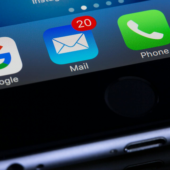Varo Bank
Best for Cash Back
Up to 5.00%
APY
Axos Bank Essential Checking Account
Best for Unlimited ATM Access
Up to 1.25%
APY
Chime Spending
Best for Digital Features
0.50%
APY
Ally Interest Checking
Best for No Fee Perks
Up to 0.25%
APY
by Kathleen Garvin
Contributor
Do you remember why you chose your current checking account?
If you got started early, your parents might have helped you open a kids’ checking or savings account at their bank’s branch. Or maybe you went with the credit union down the street from your work after getting your first W2 job.
Whatever the reason, location likely played a big part. Thankfully, you’re no longer confined to a financial institution for a checking account because of its proximity to you — or a brick-and-mortar site altogether, for that matter.
From higher interest rates to better benefits, it pays to expand your search beyond your local bank or credit union these days. Here’s how to choose the right checking account for you.
10 Best Checking Accounts for June 2022
Chime doesn’t charge overdraft fees or for overdraft protection, a monthly maintenance fee, foreign transaction fees or minimum balance fees. You can also open an easy-to-access connected savings account — it allows you to automate your savings with features like the round-up tool, which will round up your transactions to the nearest dollar and dump the change into savings. Bonus: Chime has a “Pay Friends” feature, so you don’t have to mess with cash, math or other apps to split the bill.
With Varo, you’ll pay no monthly service fees, no extra fees for minimum balance requirements, no foreign transaction fees and no cash replacement fees. You’ll just pay out-of-network ATM fees and cash deposit fees if you deposit cash in-store through Green Dot®. Varo keeps tabs on how much you spend across all your accounts, too, so you can better analyze and project your cash flow. It also allows you to set spending caps so you have a better handle on your money.
This Chase account has other fees. For example, you can use a Chase ATM for free, but you’ll pay a $2.50 fee for non-Chase ATMs in the U.S. and $5 for international withdrawals — so, this account isn’t the best for frequent international travelers. Thankfully, the bank has branches and ATMs in 33 states around the U.S., so you can avoid the fees if you’ve got one nearby.
Bonus (literally): You can get $200 when you open a new checking account. Getting it is pretty simple, too, compared with similar offers — open a new Chase Total Checking account* with $0, and set up direct deposit within 90 days of opening. Keep your account open for at least six months, or you’ll lose the bonus at closing.
Anyone can open an online checking account, but TD’s brick-and-mortar banks (and ATMs) are mostly located on the East Coast. With a $3 fee for using an out-of-network ATM, you might want to have a physical location nearby.
The best thing about this financial institution is it’ll pay you — just for opening an account. For a $300 bonus and an interest-yielding account, consider TD Bank’s higher-tier Beyond Checking account. You must meet certain criteria (and be a new customer) to earn this bonus. (And double-check when the offer ends.)
Axos offers a lot if you’re in the market for an online-only checking account. On top of no fees, Axos will also reimburse you by the end of the next business day for unlimited ATM fees within the U.S.
Regarding spending abroad — per a rep via live chat, you’ll pay a 1% service transaction charge on purchases made in other countries. So, even though this online bank account is flexible, it isn’t ideal for international travelers.
With a daily balance of $15,000 or more, this checking account yields 0.25% interest. Below $15,000, it’s 0.10%. That tops a lot of bank accounts, but it’s not as impressive as we’d expect for an account with “interest” in the name — and that balance requirement is a beast. We expect more when checking accounts earn interest.
You can access Ally Interest Checking online or through the Ally app, so it’s an accessible choice for anyone within the U.S.
With this Consumers Credit Union plant, account holders will earn 2.09% interest on your balance up to $10,000. You’ll also have all ATM fees reimbursed, as long as you:
In addition to that, you can earn 3.09% or 4.09% APY (annual percentage yield) on balances up to $10,000 if you meet CCU Visa credit card spending requirements: $500 and $1,000, respectively.
All CCU branches are in Illinois, but anyone can open and manage an account online and through the mobile app.
The downside? Schwab’s online-only High Yield Investor Checking account must be linked to a Schwab One brokerage account. Luckily, there are no fees or minimum deposits to open either account, as long as you open them together.
Neither account comes with monthly fees or a minimum balance, but “other account fees, fund expenses and brokerage commissions may apply” to the brokerage account once you begin investing, according to the Schwab site.
The checking account offers a variable interest rate. If you want to grow your savings through Schwab, you’ll want to invest through the brokerage account.
New applicants can get a $100 bonus in their account just for signing up for paperless statements and making 10 qualifying transactions within the first 60 days. Debit card transactions count, so that should be easy.
No other rewards are a part of this account, but that’s typical with a student checking account. Beyond that, the account comes with the accessibility of one of the nation’s largest financial institutions, so ATMs are plentiful and online and mobile banking is available.
This account is loaded with freebies and other extras, such as free direct deposit, unlimited check writing and a free debit card. You can also open interest-bearing accounts with the bank if you’re interested in other options. Additionally, Montgomery Bank offers a business checking account, too.
Check out our current list of bank promotions for a chance to gain a monetary bonus when signing up for a new bank account.
You probably already know that you need a checking account and if it comes with a free debit card, that’s even better. A checking plan serves as the primary hub for your money. It’s where your paychecks and direct deposits land, and, from there, you use the money to pay bills, buy the stuff you need and hopefully slide some of it into a savings account. Maintaining a savings account is a smart personal finance decision.
Picking a bank account is a personal choice. What makes checking accounts “good” depends largely on your financial situation and goals. Checking accounts come in a lot of varieties these days, each with different features and benefits. You can pick from online-only banks to those with physical branches, and from those that pay interest to those that offer free checking accounts and no fees for out-of-network ATM use. It’s up to you to do the research and find the one that will benefit you and your lifestyle the most.
But we can tell you a few things that make certain checking accounts worth opening. Here are a few important features to keep in mind when looking for the best checking accounts:
There are a few varieties of checking accounts out there that offer different benefits. You just need to figure out which kind will work best for you. Some of your options are:
Check out our current list of bank promotions for a chance to gain a monetary bonus when signing up for a new bank account.
First off, don’t think of it as an either-or situation. Both a checking account and a savings account are essential components of a healthy financial setup. You want to have one location for more regular, everyday expenses (checking) and one for longer-term savings and goals (savings).
You can also mix and match. For instance, you might go for an online checking account and a savings account at a local credit union. You can also have multiple checking accounts; perhaps one offers a new-member bonus for an influx of free cash, while another offers free overdraft protection for regular spending. Alternatively, when it comes to savings accounts, one might offer a higher annual percentage yield, while another offers other saving products like a money market account.
Regardless of the checking account or savings account you choose, it’s a good idea to have at least one of each.
Similarly, opening a checking account, period, is generally a good move, regardless of where you do it.
Keep your own habits and preferences in mind, especially when it comes to choosing between a brick-and-mortar and online-only setup. Consider fees, from initial to ongoing, as well to make sure the account doesn’t end up costing you.
Don’t get hung up on too many details: When it comes to personal finance, it ultimately comes down to what works for you and your situation.
We decided to see how some of our favorite checking accounts stack up against this criteria.
We graded 10 bank and credit union accounts on the factors that we like to see in any checking account — no fees, free ATMs, good rewards, easy setup and accessibility.
If an account has a monthly fee or out-of-network ATM charges, we highlighted some more positive qualities (think: a low minimum balance requirement, interest checking account offering or a free debit card). With that said, we prioritized those checking accounts that nixed monthly maintenance fees, featured savings accounts and had no-charge or reimbursed network ATM fees.
Here are the best checking accounts we found across (online) banks, credit unions and other financial institutions.
When it comes to choosing the best checking accounts, there’s a lot of information out there. Here, we’re answering some of the most popular questions about checking accounts.
A checking account is where you hold money at a bank, credit union or other financial institution. You typically use this account to pay for everyday expenses or bills. Depending on where you have you bank, you can access your cash in person, or via an ATM or debit card. Unlike a savings account — which you use for an emergency fund or other financial goal — checking accounts should be fairly accessible for regular spending usually with a debit card. They don’t normally accrue interest.
Every checking account — whether it’s through a physical or online bank, credit union or other fintech setup — will have its own requirements. Generally, to open a checking account, you need to be at least 18 years old (though guardians can sometimes co-sign an account for a minor) and have a government ID (such as a passport or driver’s license). You’ll likely also need to supply contact information and possibly an opening deposit.
The best bank to open an account will depend on your needs. If you prioritize banking at a physical institution with plenty of locations where you can interact with staff in person, you might choose to go with a big-name chain. If you prefer a bank where you might qualify for higher interest rates in lieu of having access to brick-and-mortar locations, an online setup might work best for you. No matter your choice, it’s a good idea to evaluate it over time; if a bank ends up not being over time.
The best free checking account will vary based on your wants and needs in a banking account. You’ll want to look for an account that has no or a low monthly fee, a free debit card and easy access to your money — whether that is an ATM, a physical branch, an app or all of the above. Bonus: look for a free checking account that also offers a new-user bonus. Right now, Chime, Varo and Axos are overall solid free options for checking. Shop around and look for a checking account that’s best for you.
Wells Fargo and Chase each offer online checking accounts, among other banking products. But they also have monthly fees, too. Good news: Well Fargo will eliminate non-sufficient fees funds (NSF) fees in the third quarter of 2022 and give customers early access to eligible direct deposits. Each has online and in-person banking; so, one could be a better fit depending on branch locations in your area. Chase often offers significant new-user sign-on bonuses.
What makes a bank good for a checking account weighs largely on what you prioritize in both a bank and an account. As a whole, you want to consider fees (how much does it cost you to keep your money there?), rewards (do you earn anything for banking with them?), accessibility (what are the requirements to open and keep your account open?) and mobility (does the bank charge foreign transaction fees?). Bonus points if they give out a… bonus, too, for being a new account holder.
The interest earned on checking accounts is considered taxable income. So, your bank, credit union or financial institution will send you a 1099-INT form each year your account earns interest over $10. You file this paperwork along with your yearly taxes. And don’t let this income being taxed deter you from saving money; a traditional or high-yield savings account is still a worthwhile tool for your money.
We provided a lot of things to consider when opening a checking account.
To recap, the best checking account for you will depend on what you need and want. If there’s a monthly fee but no network ATM fees, that account may be worth considering. Similarly, an interest-bearing checking account may rank higher on your list than online bill pay capabilities.
Ideally, you’ll find an account with no or low fees that offers easy banking options, whether you prefer in-person or mobile banking, or something else. (And hey, a cash bonus and other perks don’t hurt, either.)
Remember, you don’t have to stick with the same checking (and savings) accounts, either. It quite literally can pay to shop around for better offers.
Contributor Kathleen Garvin (@itskgarvin) is a personal finance writer based in St. Petersburg, Florida, and former editor and marketer at The Penny Hoarder. She owns a content-writing business and her work has appeared in U.S. News, Clark.com and Well Kept Wallet.
*Chime disclosure:
Chime is a financial technology company, not a bank. Banking services provided by, and debit card issued by, The Bancorp Bank or Stride Bank, N.A.; Members FDIC.
*Chase fine print:
“Checking offer is not available to existing Chase checking customers, those with fiduciary accounts, or those whose accounts have been closed within 90 days or closed with a negative balance. To receive the $200 checking bonus: 1) Open a new Chase Total Checking account, which is subject to approval AND 2) Have your direct deposit made to this account within 60 days of account opening. Your direct deposit needs to be an electronic deposit of your paycheck, pension or government benefits (such as Social Security) from your employer or the government. After you have completed all the above requirements, we’ll deposit the bonus in your new account within 10 business days. You can only receive one new checking account-related bonus per calendar year. Bonus is considered interest and will be reported on IRS Form 1099-INT.
“Account Closing: If your checking account is closed within six months after opening, we will deduct the bonus amount at closing.”
Editorial Disclosure
This content is not provided by the bank advertiser. Opinions expressed here are the author’s alone, not those of the bank advertiser. This site may be compensated through the bank advertiser Affiliate Program.
Ready to stop worrying about money?
Get the Penny Hoarder Daily
Privacy Policy
© 2022 The Penny Hoarder. – All rights reserved.
Privacy Policy and Terms of Service | Do Not Sell My Personal Information | Cookies Settings






